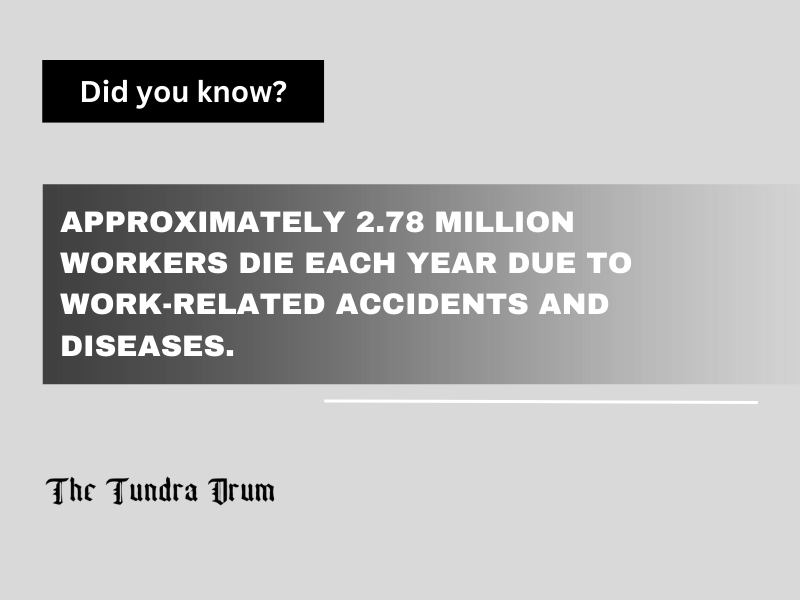| Who is Responsible for Maintaining Safety in the Workplace? The Employer is responsible for providing a safe, secure, and healthy work environment to the employees. |
Creating a safe and healthy workplace is more than just a legal requirement it’s the foundation of a productive and happy work environment. But whose job is it? Is it solely on the employer, or do employees also play a part? Keep reading to explore the roles and responsibilities involved in ensuring workplace health and safety and why it’s essential for everyone.
Why Workplace Safety Matters?
Workplace safety isn’t just about avoiding injuries it’s about creating an environment where you feel secure and valued. Globally, the stakes are high.

That includes 2 million deaths from accidents alone. Beyond that, there are about 268 million non-fatal injuries annually, often resulting in an average of three lost workdays per incident. These numbers remind us how vital it is to prioritize workplace health and safety.
What Employers Are Responsible For?
Employers are at the forefront of ensuring safety. It’s their job to provide the foundation for employee health and safety by implementing clear policies and guidelines. A good employer will:
- Identify potential health and safety hazards in an office, from slippery floors to poor lighting.
- Create strong health and safety programs in the workplace that outline steps to prevent accidents.
- Regularly update equipment and provide necessary training.
In the U.S., these measures have shown results. For example, the number of worker deaths has drastically decreased from 38 deaths per day in 1970 to about 15 daily in 2022. Despite this improvement, there were still 5,486 fatal work injuries reported in 2022, which shows there’s more work to do.
The Role of Employees
While employers take the lead, you, as an employee, play a big part too. Following safety rules, reporting risks, and actively participating in safety programs help ensure everyone stays safe.
Remember, being aware of your surroundings and speaking up about unsafe conditions can prevent accidents before they happen. Non-fatal incidents in the U.S. dropped to 2.61 million in 2021 from 2.65 million in 2020, partly due to increased awareness and shared responsibility.
Mental Health: An Overlooked Aspect
It’s not just physical safety that matters mental health and safety in the workplace are equally required. Occupational risks contribute to 8% of the global burden of depression, which underscores the need for mental well-being at work.
Employers can support mental health by:
- Providing access to counseling services.
- Encouraging open discussions about stress and burnout.
- Offering mental health days.
In Australia, mental health conditions made up 10.5% of all serious workplace claims in 2022-23, highlighting the growing focus on this issue.
What About Global and Regional Differences Regarding a Safe and Healthy Workplace?
Globally, the challenges vary by region:
- In Australia, 200 workplace fatalities were reported in 2023, slightly higher than 195 in 2022.
- Workers there filed 139,000 serious compensation claims, showing the ongoing need for strict work health and safety services.
- Meanwhile, in the U.S., efforts to improve safety have led to long-term reductions in fatality rates, but challenges like high-risk industries remain.
Recommendations for a Safer Workplace
If you’re wondering how to improve safety and health, here are some actionable steps:
- Invest in Training: Regular sessions help employees understand and prevent hazards.
- Focus on Mental Health: Include resources that address stress and burnout.
- Encourage Reporting: Make it easy for you and your team to share concerns.
These steps are essential for reducing risks. For example, employers in Australia have kept their fatality rate steady at 1.4 per 100,000 workers, thanks to proactive measures.
A Shared Responsibility
At the end of the day, ensuring health and safety at work is a shared responsibility. Employers must provide a safe environment, but employees also need to take ownership by staying alert and following safety protocols.
When you contribute to a safer workplace, everyone benefits from fewer injuries to a happier, healthier team. We should make work health and safety a top priority, wherever we are in the workplace.











